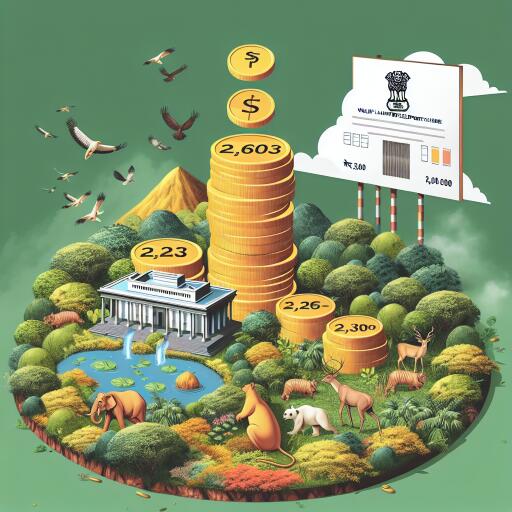
Centre Okays Rs 2,603 Crore For Wildlife Habitat Development Scheme
In a move that underscores the balance between environmental conservation and economic growth, the Cabinet has approved the continuation of the Wildlife Habitat Development Scheme with an outlay of Rs 2602.98 crore.
This scheme is set to benefit 55 tiger reserves, 33 elephant reserves, and 718 protected areas including their buffer zones. The initiative aims to generate over 50 lakh man-days of direct employment, besides creating indirect job opportunities through eco-tourism and associated activities.
The scheme encompasses critical projects such as Project Tiger, Project Elephant, and the Development of Wildlife Habitat. “The scheme seeks to enhance technological interventions in various thematic areas over the current and subsequent financial years within our tiger and wildlife-bearing forests,” a statement from the Ministry of Environment, Forest and Climate Change mentioned.
Project Tiger aims to integrate technology into daily conservation practices. An example of this is the M-STrIPES (Monitoring System for Tigers, Intensive Protection, and Ecological Status) mobile application. This app, aligning with the ‘Digital India’ initiative, was instrumental during the fifth cycle of the All-India Tiger Estimation in 2022 for collecting ecological data in the field.
The project has also leveraged conservation genetics significantly. Standard Operating Procedures (SOPs) for translocating tigers based on their genetic makeup have been issued, and genetics have been utilized to estimate tiger numbers in low-density landscapes and to understand their food ecology.
The Project Tiger component is also supporting the ambitious Project Cheetah within the umbrella scheme of Integrated Development of Wildlife Habitats. Additionally, Project Dolphin will be bolstered with equipment like Remotely Operated Vehicles (ROVs) and passive acoustic monitoring devices for the enumeration of dolphins and their habitats.
Under the Development of Wildlife Habitat, Project Lion is set to be strengthened in accordance with the activities detailed in the document titled “Lion @ 2047: A Vision for Amrut Kaal”.
Addressing the human-elephant conflict, Project Elephant aims to scale up information and communication technology interventions. These measures, which have undergone experimental testing, will now be implemented more broadly to manage conflicts and ensure the safety of both humans and elephants.
This comprehensive approach signifies the government’s commitment to conserving wildlife while also fostering sustainable livelihoods through innovative and technologically advanced solutions.





Leave a Reply